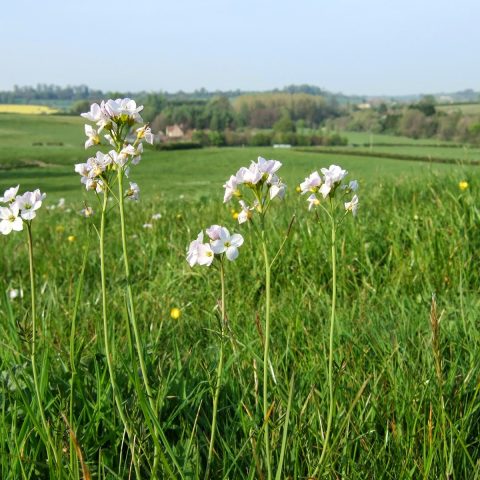Derry & Strabane Council's Story
An action from the Derry & Strabane Green Infrastructure Plan 2019 - 2032 was to develop a Council Pollinator Plan, aligned to the All Ireland Pollinator Plan. The Council Pollinator Plan aimed to create food & shelter for the one-third of the bee population that was at risk of extinction on the island of Ireland.
Council selected initially 10 large green spaces to change the grass management at these sites, to create species-rich grasslands to reverse the decline in pollinators. Council invested in specialist machinery that cuts & lifts the grass. The change in grass management resulted in Council reducing its grass cutting from 15 times a year to once a year. This was extended in the second year to 11 large green spaces and 23 cemetery sites, which equates to 30 ha (4% of our estate).
This has resulted in creating sustainable wildflower meadows, by allowing the wildflowers to grow, flower & set their seed for the following year. Subsequently, the grass is cut & lift with specialist machinery, to enable the wildflowers to thrive the following year.
This provides a sustainable source of food & shelter for pollinators. This initiative has increased the natural capital value of these sites by £8,000 / annum. The reduction in grass cutting has reduced our carbon emissions by 2T /annum, which is a simple practical example of how to reduce carbon emissions and address biodiversity loss.
Useful Learnings from Derry & Strabane Council
We had several knowledge exchanges with adjacent local authorities.
We also conducted a literature review.
There was a site visit to see which pieces of machinery were required.
We also developed marketing tools to include signage, videos and images to communicate the initiative.
Derry & Strabane Council's Metrics
Pollinator surveys to assess the changes in grass management has on the number of pollinators utilising the sites.
Meadow surveys to assess the change in grass management from amenity grassland to species rich grassland.
Natural capital value associated with the change in habitat type.
Cost savings and associated reduction in carbon emissions by reducing frequency of the grass cutting.







